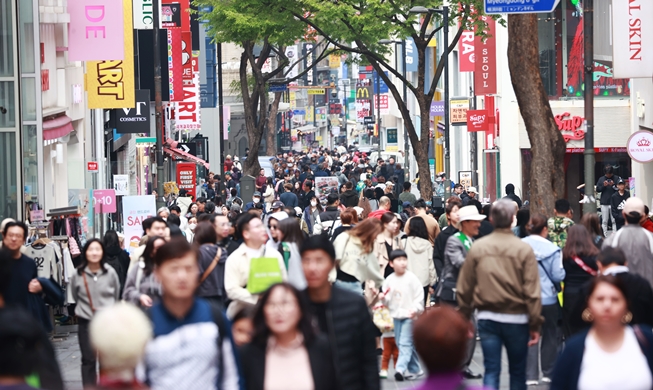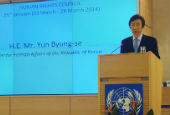-
 Korea.net's 24-hour YouTube channel
Korea.net's 24-hour YouTube channel- NEWS FOCUS
- ABOUT KOREA
- EVENTS
- RESOURCES
- GOVERNMENT
- ABOUT US
At the National Museum of Korean Contemporary History in central Seoul on March 1, there was a 13-year-old girl who, in a rage, stabbed the rising sun flag of Imperial Japan with her sword. It was the only recourse available to her as the Japanese army had forced her to work as a sex slave. There was also a woman whose chest was bloodstained, as if she suffered a gunshot wound.
The two girls are in pictures that are on display at a special exhibition about the so-called “comfort women,” the people who suffered sexual enslavement by the Imperial Japanese Army.
On display are 22 pieces inspired by the victims’ suffering that have just returned to Korea. The works of art traveled to France to be shown at the Angoulême International Comics Festival. While in France, the works broadcast to a wider world the suffering that the “comfort women” underwent during the darkest days of occupation and war.
With the exhibit, the graphic novel-like paintings have caused a great ripple effect and have raised awareness of the issue across the world. They reveal in an unbridled manner the stories of those who were coerced, forced and entrapped into sexual slavery by and for the Japanese soldiers.
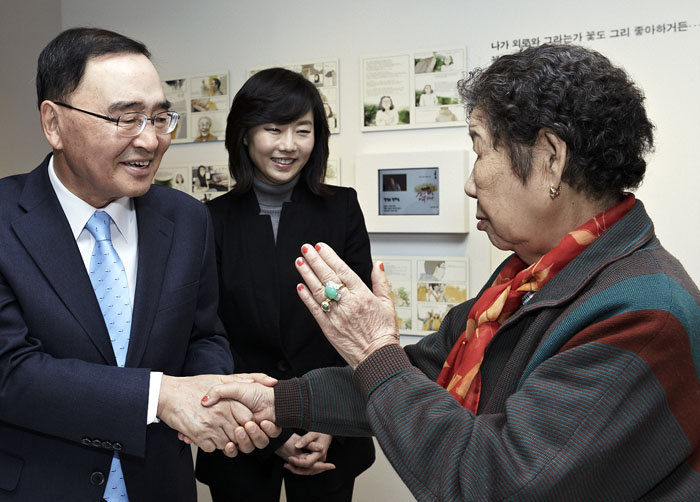
Prime Minister Chung Hongwon talks to Gang Il-chul, one of the former enforced sex slaves during the Japanese colonial period, holding Gang’s hand. (From left) Prime Minister Chung Hongwon, Minister of Gender Equality and Family Cho Yoonsun and Gang Il-chul. (photo courtesy of the National Museum of Korean Contemporary History)
Now, the graphic novels and comic strips have come home to tell their stories to people here in Korea. Co-hosted by the Ministry of Culture, Sports and Tourism and the Ministry of Gender Equality and Family, the special exhibition opened its doors on March 1, Independence Movement Day.
The opening ceremony was attended by Prime Minister Chung Hongwon, Vice Minister of Culture, Sports and Tourism Cho Hyun-jae, Minister of Gender Equality and Family Cho Yoonsun, some of the surviving victims of sexual slavery and the artists who attended the French comic festival.
“This exhibition gives us a rare opportunity to educate youth on the truth of history. It serves as a wake-up call for Japan to stop turning a blind eye to its wrongful past and to face up to its past actions,” said the prime minister.
The event, he hopes, will pave the way for the “comfort women” problem to be dealt with as an issue of universal human rights.
Chung went on to promise the participating former slaves that, “Our government will go all-out to urge the Japanese government to compensate you as soon as possible for what they did to you.”
At the exhibition, documents bearing testament to the dark past of enforced sexual slavery have come to life. There is a diary written by a janitor who managed brothels for the Imperial Japanese Army. There is a list that documents each of the young slaves.
Some former “comfort women,” now gray-haired and elderly, also shared their poignant, inexplicable past by making paintings drawn from their painful memories. Two of the pictures are Kim Sun-deok’s “The Day I Was Dragged There” and Kang Deok-gyeong’s “Stolen Innocence.”
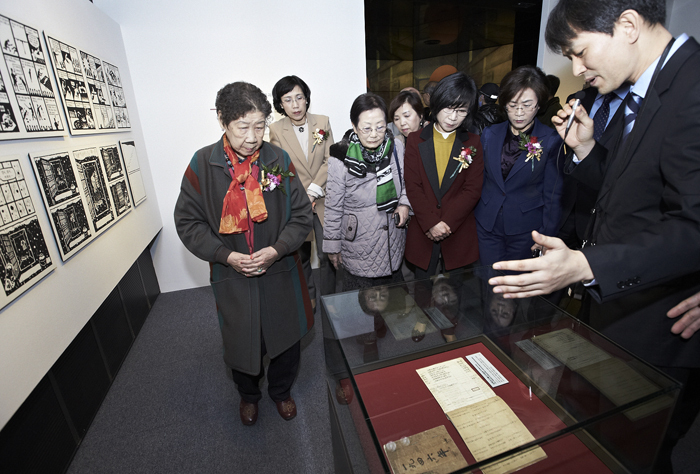
Former “comfort woman” Gang Il-chul (left) and other participants listen to an explanation of some of the historical documents on display. The documents offer evidence of the “comfort women” system that ensnared people to work as sex slaves for Japanese imperial soldiers. (photo courtesy of the National Museum of Korean Contemporary History)
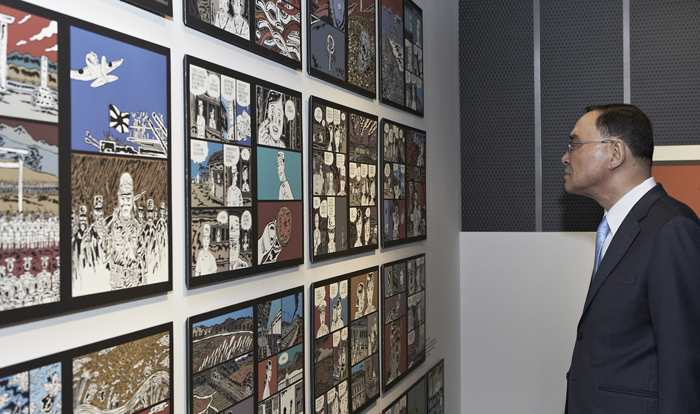
Prime Minister Chung Hongwon admires some of the graphic novel artwork that depict the painful days the “comfort women” had to endure, on March 1. (photo courtesy of the National Museum of Korean Contemporary History)
“As the ‘comfort women’ issue has become widely known, it will, hopefully, regain for the women their lost honor and help to mend their wounds,” said Minister of Gender Equality and Family Cho Yoonsun.
“In order to enhance friendly relations between Korea and Japan in the years to come, this issue must be tackled right now.”
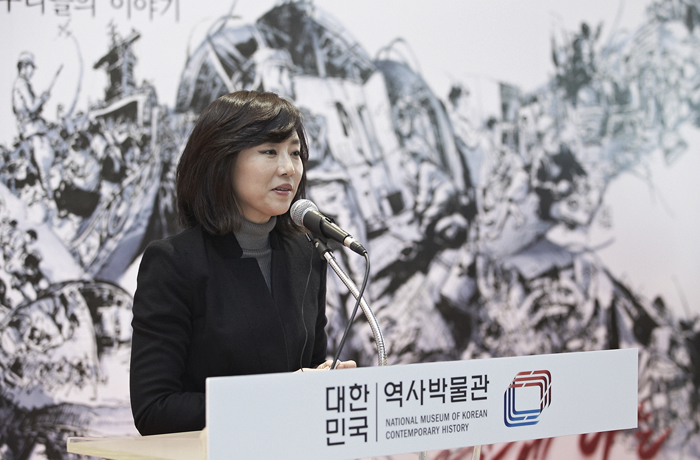
Minister of Gender Equality and Family Cho Yoonsun makes her remarks at the opening ceremony of a special exhibition about “comfort women,” on March 1. (photo courtesy of the National Museum of Korean Contemporary History)
“This issue must be solved before I take my last breath,” said another participating former “comfort woman,” Lee Yong-su. “For future generations and for our country itself, this must be handled in a peaceful manner.”
The exhibition will continue until April 13 at the National Museum of Korean Contemporary History.
By Sohn JiAe
Korea.net Staff Writer
jiae5853@korea.kr
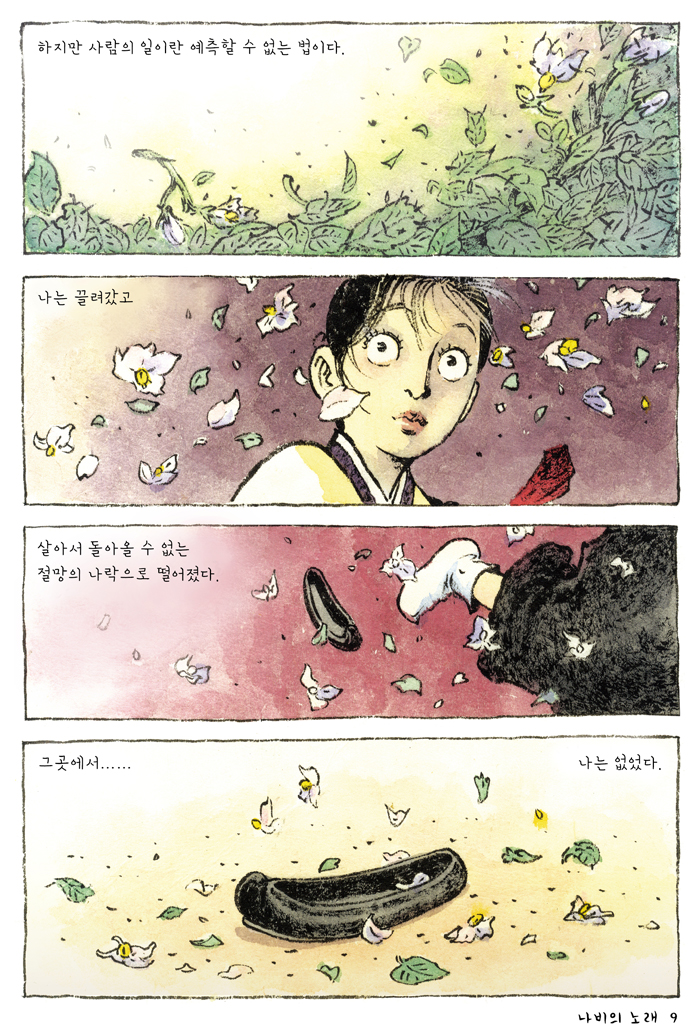
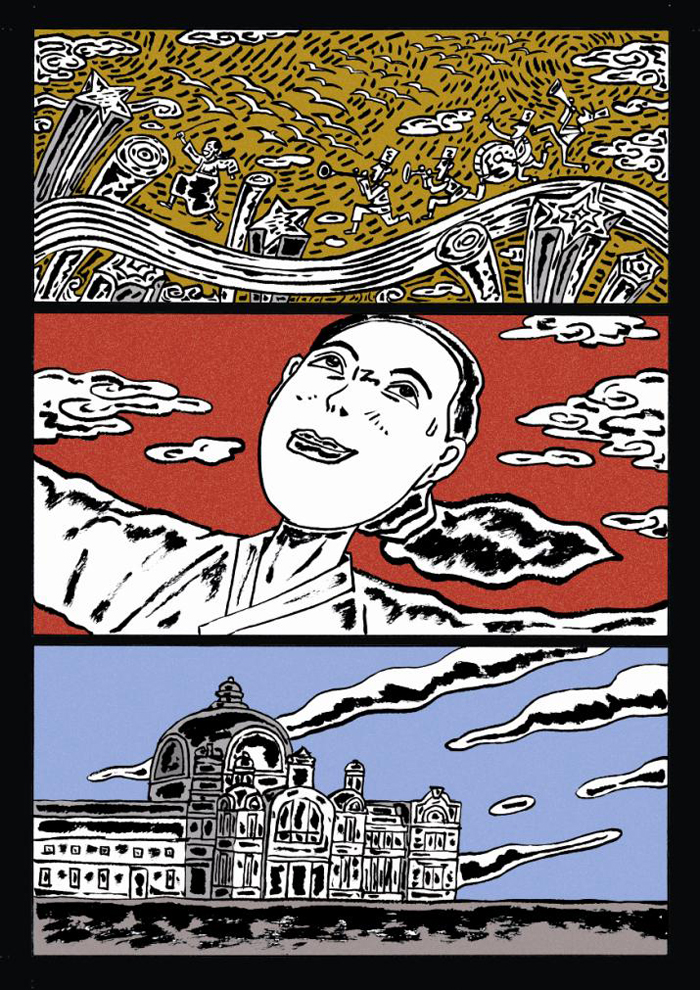
(Top) “The Song of A Butterfly” by Kim Kwang-seong and Chung Ki-young. (Bottom) “A Flower Ring” by Tak Young-ho. Both are among the works on display at a “comfort women” exhibition in Seoul. (photo courtesy of the National Museum of Korean Contemporary History)
Related Contents
Most popular
- First hearing-impaired K-pop act hopes for 'barrier-free world'
- 'Mad Max' director impressed by 'cinema-literate' Korean viewers
- Romanian presidential couple visits national cemetery
- 'Korean mythology is just as wonderful as Greek and Roman'
- Hit drama 'Beef' wins awards from 3 major Hollywood guilds




